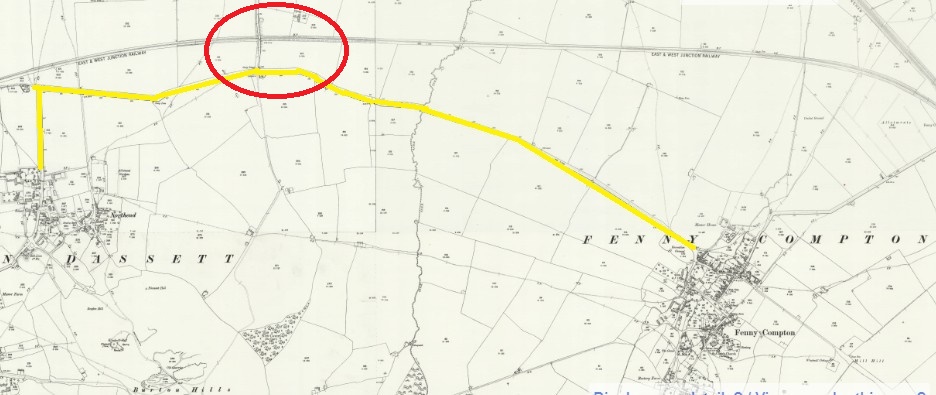BS3
Abominable Showman
- Joined
- Sep 20, 2021
- Messages
- 1,849
I've mentioned this one previously, but thought I would open a separate thread as I find this a particularly interesting set of 'sightings', sitting as it does in the grey area between ufology and other types of Fortean phenomena. Also it took place almost exactly a hundred years ago, around the villages of Fenny Compton and Burton Dassett, where the Burton Dassett Hills form a prominent landmark:

Fort himself gave a simple summary of the events:
The lights were actually reported quite regularly over the winter of 1922-3, and there was a flurry of articles in local newspapers about them. Most seemed to suggest the lights were interpreted as some form of ghost. The Warwickshire Advertiser reported in April 23 that "crowds of curiosity seekers" were heading to what was called "the Farm of Spooks" to try and catch a glimpse of the lights. A journalist saw the light, at a distance he estimated as about a mile, from the tower of Burton Dassett Church, describing it as "steady and vivid" but faintly illuminating the sky for several miles with "flickering" upward beams. While there were attempts at the time to explain the lights as will-o-the-wisps associated with a nearby pond, this doesn't seem to match that well with people's descriptions.
In more recent times David Clarke and Paul Devereux have suggested these were examples of 'earthlights' - there is a small fault nearby although you can say this about many areas of the country. Clarke noted there was a UFO flap in the district in the early 70s (perhaps now best remembered for the 1971 film of a 'UFO' taken by an ATV film unit, that later proved to have been an aircraft dumping fuel):
https://www.macearchive.org/films/atv-today-26101971-ufo-sighting-atv-film-unit
In the present day a local author has argued that the 1923 events were a UFO flap - perhaps a predictable development.
Anyway this is an interesting historical event which just possibly may hint at a physical phenomenon which is behind many lights-in-the-sky type UFO sightings.
Fort himself gave a simple summary of the events:
London Daily Express, Feb. 15, and following issues, 1923 -- brilliant luminous things moving across fields, sometimes high in the air, at Fenny Compton, Warwickshire. They were "intense lights," like automobile headlights. Sometimes these luminous things, or beings, hovered over a farm house. It was a deserted farm house, according to the London Daily News, Feb. 13. About a year later, one of these objects, or whatever they were, returned, and was reported as "a swiftly moving light," by several persons, one of them Miss Olive Knight, a school teacher, of Fenny Compton (London Sunday News, Jan. 27, 1924).
The lights were actually reported quite regularly over the winter of 1922-3, and there was a flurry of articles in local newspapers about them. Most seemed to suggest the lights were interpreted as some form of ghost. The Warwickshire Advertiser reported in April 23 that "crowds of curiosity seekers" were heading to what was called "the Farm of Spooks" to try and catch a glimpse of the lights. A journalist saw the light, at a distance he estimated as about a mile, from the tower of Burton Dassett Church, describing it as "steady and vivid" but faintly illuminating the sky for several miles with "flickering" upward beams. While there were attempts at the time to explain the lights as will-o-the-wisps associated with a nearby pond, this doesn't seem to match that well with people's descriptions.
In more recent times David Clarke and Paul Devereux have suggested these were examples of 'earthlights' - there is a small fault nearby although you can say this about many areas of the country. Clarke noted there was a UFO flap in the district in the early 70s (perhaps now best remembered for the 1971 film of a 'UFO' taken by an ATV film unit, that later proved to have been an aircraft dumping fuel):
https://www.macearchive.org/films/atv-today-26101971-ufo-sighting-atv-film-unit
In the present day a local author has argued that the 1923 events were a UFO flap - perhaps a predictable development.
Anyway this is an interesting historical event which just possibly may hint at a physical phenomenon which is behind many lights-in-the-sky type UFO sightings.





